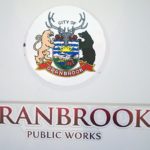Home »

Kootenay Columbia property assessments on the rise
In the next few days, owners of more than 147,500 properties throughout the Kootenay Columbia region can expect to receive their 2020 BC Assessment notices, which reflect market value as of July 1, 2019.
And while the province overall is experiencing an average decrease of nearly 2.5% from 2019, every municipality in the East Kootenay is seeing an increase, with the City of Cranbrook and City of Fernie both up nine per cent, the City of Kimberley up seven per cent, Village of Radium Hot Springs is up eight per cent, Village of Canal Flats seven per cent, District of Sparwood five per cent, District of Invermere three per cent and District of Elkford is up one per cent. The Town of Creston is up 11% and Town of Golden six per cent (see more below).
“The majority of Kootenay Columbia homeowners can expect an increase when compared to last year’s assessments,” said Deputy Assessor Ramaish Shah. “The changes in home values are moderating in many cases as compared to the past several years. Some communities, however, are seeing higher demand than in previous years and that is reflected in this year’s assessments.”
As B.C.’s trusted provider of property assessment information, BC Assessment collects, monitors and analyzes property data throughout the year. The table below indicates the Kootenay Columbia region’s estimated range of percentage changes to 2020 assessment values by property type compared to 2019. Please note property assessments may vary by jurisdiction or municipality within the region.
Property Type |
Kootenay Columbia Region
2020 Assessments Range of % Changes in Value (as of July 1, 2019) |
| Residential Single Detached Homes | -5% to +15% |
| Residential Strata Units (e.g. condominiums) | -5% to +20% |
| Commercial | -5% to +15% |
| Industrial | -10% to +10% |
Overall, Kootenay Columbia’s total assessments increased from about $43.6 billion in 2019 to almost $46.7 billion this year. A total of about $571 million of the region’s updated assessments is from new construction, subdivisions and rezoning of properties. BC Assessment’s Kootenay Columbia region covers the southeast portion of the province from Fernie to Grand Forks and from Revelstoke to Cranbrook.
The summaries below provide estimates of typical 2019 versus 2020 assessed values of properties throughout the region.
These examples demonstrate market trends for single-family residential properties by geographic area:
| Single Family Home Changes by
Community |
2019 Typical Assessed Value as of July 1, 2018 |
2020 Typical Assessed Value as of July 1, 2019
|
% Change |
| City of Castlegar | $307,000 | $320,000 | +4% |
| City of Cranbrook | $283,000 | $307,000 | +9% |
| City of Fernie | $509,000 | $553,000 | +9% |
| City of Grand Forks | $250,000 | $253,000 | +1% |
| City of Greenwood | $133,000 | $134,000 | +1% |
| City of Kimberley | $284,000 | $303,000 | +7% |
| City of Nelson | $461,000 | $471,000 | +2% |
| City of Revelstoke | $462,000 | $509,000 | +10% |
| City of Rossland | $335,000 | $362,000 | +8% |
| City of Trail | $196,000 | $205,000 | +5% |
| District of Elkford | $246,000 | $248,000 | +1% |
| District of Invermere | $397,000 | $409,000 | +3% |
| District of Sparwood | $255,000 | $267,000 | +5% |
| Town of Creston | $238,000 | $263,000 | +11% |
| Town of Golden | $332,000 | $353,000 | +6% |
| Village of Canal Flats | $175,000 | $188,000 | +7% |
| Village of Fruitvale | $276,000 | $288,000 | +5% |
| Village of Kaslo | $252,000 | $268,000 | +6% |
| Village of Midway | $212,000 | $196,000 | -7% |
| Village of Montrose | $271,000 | $279,000 | +3% |
| Village of Nakusp | $235,000 | $237,000 | +1% |
| Village of New Denver | $202,000 | $207,000 | +3% |
| Village of Radium Hot Springs | $264,000 | $285,000 | +8% |
| Village of Salmo | $188,000 | $225,000 | +20% |
| Village of Silverton | $247,000 | $246,000 | 0% |
| Village of Slocan | $166,000 | $165,000 | -1% |
| Village of Warfield | $221,000 | $256,000 | +16% |
These examples demonstrate market trends for strata residential properties for the urban centres of Cranbrook and Nelson:
|
Strata Home Changes By Community |
2019 Typical Assessed Value as of July 1, 2018 |
2020 Typical Assessed Value as of July 1, 2019
|
% Change |
| City of Cranbrook | $162,000 | $162,000 | 0% |
| City of Nelson | $378,000 | $411,000 | +9% |
BC Assessment’s website at bcassessment.ca includes more details about 2020 assessments, property information and trends such as lists of 2020’s top valued residential properties across the province.
The website also provides self-service access to a free, online property assessment search service that allows anyone to search, check and compare 2020 property assessments for anywhere in the province. Property owners can unlock additional property search features by registering for a free BC Assessment custom account to check a property’s 10-year value history, store/access favourites, create comparisons, monitor neighbourhood sales, and use our interactive map. New for 2020, the website is fully mobile-friendly.
“Property owners can find a lot of valuable information on our website including answers to many assessment-related questions, but those who feel that their property assessment does not reflect market value as of July 1, 2019 or see incorrect information on their notice, should contact BC Assessment as indicated on their notice as soon as possible in January,” said Deputy Assessor Ramaish Shah.
“If a property owner is still concerned about their assessment after speaking to one of our appraisers, they may submit a Notice of Complaint (Appeal) by January 31, for an independent review by a Property Assessment Review Panel,” added Shah.
The Property Assessment Review Panels, independent of BC Assessment, are appointed annually by the Ministry of Municipal Affairs and Housing, and typically meet between February 1 and March 15 to hear formal complaints.
“It is important to understand that increases in property assessments do not automatically translate into a corresponding increase in property taxes,” explained Shah. “As noted on your Assessment Notice, how your assessment changes relative to the average change in your community is what may affect your property taxes.”
Facts on B.C. Property Assessments and the 2020 Assessment Roll
- Total number of properties on the 2020 Roll is 2,091,135, an approximate 1.06% increase from 2019.
- Total value of real estate on the 2020 Roll is about $1.94 trillion, a decrease of nearly 2.5% from 2019.
- Total amount of ‘non-market change’, including new construction, rezonings and subdivisions is approximately $27.1 billion, a decrease of almost -8.63% from the 2019 revised roll of $29.6 billion.
- In B.C., approximately 88% of all properties are classified with some residential (Class 1) component. This equates to $1,462,895,234,775 of the value on the total provincial roll.
Assessments are the estimate of a property’s market value as of July 1, 2019 and physical condition as of October 31, 2019. This common valuation date ensures there is an equitable property assessment base for property taxation.
Changes in property assessments reflect movement in the local real estate market and can vary greatly from property to property. When estimating a property’s market value, BC Assessment’s professional appraisers analyze current sales in the area, as well as considering other characteristics such as size, age, quality, condition, view and location.
Real estate sales determine a property’s value which is reported annually by BC Assessment. Local governments and other taxing authorities are responsible for property taxation and, after determining their own budget needs this spring, will calculate property tax rates based on the assessment roll for their jurisdiction.
BC Assessment’s assessment roll provides the foundation for local and provincial taxing authorities to raise over $8 billion in property taxes each year. This revenue funds the many community services provided by local governments around the province as well as the K-12 education system.
BC Assessment’s website provides a listing of property assessments and sales to help property owners understand their property’s market value and provide comparable sales information.









